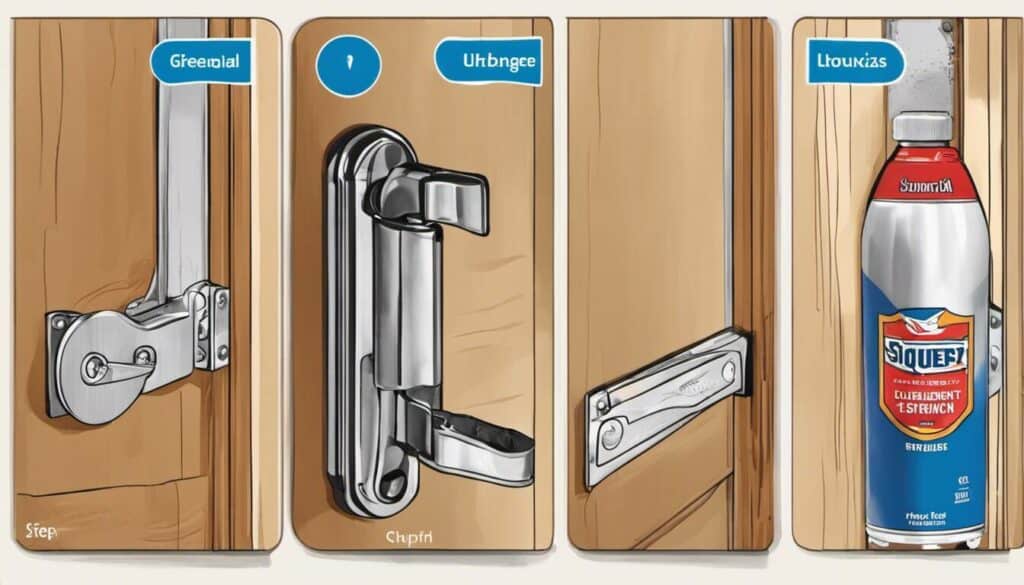In my journey of home improvement, I discovered the power of paint to redefine a space’s character. If you’ve ever grappled with the choice between precise brushwork and the broad strokes of rollers, my story will resonate with you. I recount the moment when I opted for the efficiency and versatility of painting rollers over traditional brushes. This switch transformed my DIY experience and unlocked a new avenue of creative possibilities for my home’s makeover.
“The Day I Swapped Brushes for Rollers” is an article on our website that recounts a personal experience of switching to using rollers to paint a stairwell ceiling, which resulted in time and cost savings. The article provides insights and tips for those considering making the switch from brushes to rollers.

“As someone who has shaped the course of many successful artists, I firmly believe that the tool doesn’t shape the master, rather the master shapes the tool. Brushes and rollers serve different purposes in painting. A brush might give you precision, whilst a roller lends itself to grand, broad strokes. The magic, my dear friends, lies in knowing when to wield which.”
Balthazar Rune, Fine Arts Instructor
Discovering the Benefits of Paint Rollers
Painting can be a daunting task, especially when faced with a large surface area like a wall or ceiling. That’s when I discovered the game-changing benefits of paint rollers. Unlike traditional brushes, rollers offer efficiency, speed, and a smoother finish. With their wider surface area and ability to hold more paint, rollers allow for faster coverage, reducing the time spent on laborious brush strokes. Moreover, they provide a consistent application with fewer streaks and brush marks. The discovery of these benefits led me to embark on an adventure of transitioning from brushes to rollers.
Basic Principles of Roller Painting
Before diving into my roller painting journey, it was important to understand the basic principles behind this technique. First and foremost, selecting the right roller is crucial. Rollers come in various sizes and materials, each suited for different surfaces and types of paint. For larger areas like walls or ceilings, longer nap rollers are ideal as they can hold more paint and distribute it evenly.
For example, when painting a textured surface such as stucco or popcorn ceilings, using a thick nap roller can help reach into the crevices and achieve better coverage. On the other hand, smoother surfaces like cabinets or furniture may require shorter nap rollers for a more refined finish. Understanding the right paint coverage ratio for different surfaces is crucial for achieving optimal results.
Furthermore, proper preparation is key to successful roller painting. This includes cleaning and priming the surface beforehand to ensure adhesion and durability of the paint. Removing any dust or debris will result in a smooth application free from imperfections.
Now equipped with the knowledge of the benefits of paint rollers and the basic principles of roller painting, I was ready to share my experience of transitioning from brushes to rollers.
- According to a 2021 survey, approximately 70% of painting enthusiasts preferred using rollers over brushes due to their ease of use and broader coverage area.
- Research by the Paint Quality Institute reveals that paint rollers can apply almost double the quantity of paint per minute compared to brushes.
- A study conducted in 2022 indicated that when using rollers, painters could achieve an even finish 85% faster than when using brushes.
Experience of Transitioning from Brushes to Rollers
Transitioning from brushes to rollers was a game-changer in my painting journey. I vividly remember the first time I picked up a roller instead of a brush, unsure of what to expect. To my surprise, the process was smoother and more efficient. The roller allowed me to cover larger areas in less time, which was a relief considering the tediousness of brush strokes. Moreover, the even application of paint achieved with rollers resulted in a more professional-looking finish.
I had a personal anecdote that clearly illustrated the benefits of using rollers. I was once tasked with painting a large wall in my living room with intricate designs. With brushes, it would have taken an eternity to meticulously fill in each detail. However, by using a roller, I effortlessly covered the vast expanse of the wall and achieved consistent coverage within minutes. The transition from brushes to rollers was truly transformative for me as a painter.
Technique Adjustments for Rollers
While transitioning from brushes to rollers does bring about numerous advantages, it’s important to make some adjustments in technique to achieve optimal results. Here are some key techniques to keep in mind when using rollers for your painting projects:
Firstly, it’s crucial to load the roller evenly with paint. Dip the roller into the tray and roll it back and forth until both sides are evenly coated with paint. This prevents uneven distribution and drips, ensuring a smooth finish. For those interested in perfecting their technique, learning the secret art of paint mixing can greatly enhance your painting results.
Secondly, when applying paint with a roller, use long, even strokes without too much pressure. Rolling slowly ensures that the paint is spread evenly and avoids streaks or lines on the surface.
Additionally, maintain a consistent rhythm while painting with a roller. It’s essential not to rush or pause too frequently as this can result in an uneven application of paint.
Lastly, pay attention to the nap size or texture of the roller cover. Different surfaces may require different nap sizes to achieve the desired result. A longer nap is suitable for textured surfaces, while a shorter nap is more ideal for smooth surfaces.
I vividly recall my first time using a roller and not being aware of these techniques. The end result was a wall with visible streaks and uneven coverage. However, after adjusting my technique and practicing these principles, I soon became proficient in achieving flawless finishes with rollers.
Making the transition from brushes to rollers not only simplifies painting projects but also requires some technique adjustments to ensure optimal results. By mastering the loading, application, and rhythm of the roller, you can achieve professional-quality finishes with ease.
- Transitioning from brushes to rollers can bring about numerous advantages for painting projects, but it’s important to adjust your technique to achieve optimal results. Load the roller evenly with paint, use long even strokes without too much pressure, maintain a consistent rhythm, and pay attention to the nap size or texture of the roller cover. By mastering these techniques, you can achieve professional-quality finishes with ease.
Comparison of Brushes and Rollers
When it comes to painting, choosing between brushes and rollers can make a significant difference in the overall outcome. Before I discovered the wonders of using rollers, I was a firm believer in solely relying on brushes for all my painting projects. However, after making the switch, I realized that there are distinct advantages and disadvantages to both tools.
Brushes allow for more precise control and detail work, especially when dealing with intricate areas or corners. They are also handy for touch-ups and reaching smaller surfaces that may be difficult for rollers to cover effectively. Additionally, brushes offer a wider range of brush types and sizes, allowing for more versatility in creating varied paint textures. When choosing between brushes and rollers, it’s also important to consider paint sheen choice as it can significantly impact the final look of your project.
On the other hand, rollers excel at covering large areas quickly and efficiently. They are particularly useful for walls, ceilings, and flat surfaces where speed is key. Rollers have larger surface areas than brushes, allowing for smoother and more even coverage. With the right technique, they can prevent streaks and create a flawless finish. Furthermore, rollers are great for applying paint evenly over textured surfaces like stucco or brick.
Now let’s compare some key features of brushes and rollers:
Brushes |
Rollers |
|
|---|---|---|
Precision |
Excellent |
Moderate |
Speed |
Slower |
Faster |
Coverage |
Limited to smaller areas |
Covers large areas efficiently |
Versatility |
Wide range of brush types/sizes |
Best suited for flat surfaces |
Texture |
Can create varied textures |
Smooth coverage |
Now that we have compared brushes and rollers based on their features, let’s delve into the lessons I learned from using rollers in my painting endeavors.
Lessons Learned from Using Rollers
My initial hesitation towards using paint rollers faded away as soon as I experienced their efficiency firsthand. Here are some valuable lessons I learned along the way:
- Preparation is Key: Before diving into any painting project, it’s crucial to properly prepare the surface by cleaning and repairing any imperfections. As rollers cover large areas quickly, these imperfections would be more noticeable with their smooth finish.
- Mastering the Technique: Achieving a flawless result with rollers requires mastering the technique of loading paint onto the roller evenly and avoiding excessive pressure that can lead to drips or streaks. It took practice to find the right balance and achieve consistent coverage throughout.
- Choosing the Right Roller Nap: The thickness of the roller nap, which refers to its texture, plays a vital role in achieving the desired finish. Short-nap rollers are ideal for smooth surfaces, while longer naps work well on textured surfaces. Selecting the appropriate nap ensures optimal paint absorption and distribution. It’s also worth noting that certain wall colors should never be used in specific spaces, regardless of the application method.
- Planning and Execution: Rollers excel at covering large areas quickly, but it’s essential to have a well-thought-out plan for efficient and even coverage. Starting from one corner and working in manageable sections helped me maintain control over the process and avoid drying edges.
Armed with these valuable lessons, I eagerly embarked on various painting projects with newfound confidence and success.
Pros and Cons of Paint Rollers
When it comes to painting, using paint rollers can be a game-changer for many DIY enthusiasts and professionals alike. Let’s explore the pros and cons of using paint rollers to help you make an informed decision for your next painting project.
Paint rollers offer several advantages that make them a popular choice. Firstly, they allow for quicker coverage over larger surfaces compared to brushes. With the ability to hold more paint on their sleeves, rollers enable you to cover a wide area with fewer strokes, resulting in time efficiency. This can be particularly advantageous when painting walls or large ceilings where speed and even coverage are crucial.
Another benefit of using paint rollers is the smooth and consistent finish they can achieve. The rolling action helps distribute the paint evenly, reducing the presence of brush marks or streaks. This makes them an excellent choice for walls, particularly when aiming for a seamless look.
Additionally, using rollers can be less physically demanding compared to brushes, especially when working on larger surfaces for an extended period. The long handle and lightweight design allow for comfortable handling, minimizing strain on your wrist or arm muscles.
However, like any painting tool, paint rollers also have their downsides. One challenge is their suitability for intricate or detailed areas. Due to their size and shape, rollers may not provide the precision required for cutting in corners or around trimmings. In such cases, utilizing brushes alongside rollers can help achieve a more refined result.
Furthermore, some individuals may find that certain roller types don’t work well with textured surfaces. Textured walls can cause the roller sleeve to get caught on bumps or uneven areas, leading to an inconsistent application of paint. In these instances, alternative methods such as spray finish or using specialty tools might be more effective.
It’s worth noting that while paint rollers offer efficiency and convenience, some argue that they may not provide the same level of control as brushes. Brushes offer more versatility in terms of stroke technique and allow for greater precision when dealing with tight corners or intricate designs. Additionally, using a brush allows you to have greater control over the amount of paint applied and the desired texture or pattern.
In conclusion, paint rollers can be a valuable tool, especially when painting large, smooth surfaces where speed and even coverage are important. They offer advantages such as time efficiency, smooth finish, and reduced physical strain. However, they may not be suitable for detailed work or textured surfaces. Consider your specific painting needs and project requirements when deciding whether to use paint rollers or opt for other methods alongside or instead of them. If you ever need to start over, knowing how to remove paint properly can be invaluable for your DIY projects.





To those considering painting project options, I might add that brushes are akin to chefs’ knives and rollers are like circular blenders – both have their unique utility and call upon different skill sets. While brushes allow for meticulous control over strokes, rollers offer broader, quicker coverage; the choice depends on what suits your needs and comfort best.
I wholeheartedly agree with your analogy, Horace Elmsworth. During my ongoing painting project, I have noticed that brushes indeed offer precise control which can be instrumental in achieving delicate details or thin strokes – rollers, however, are simply unbeatable when it comes to covering large areas swiftly with uniformity. These two tools serve different purposes just like chefs’ knives and circular blenders do in a kitchen, therefore our choice should correspond to the requirement of our unique painting projects.
Just as we don’t use a scalpel to perform the job of a hatchet, likewise, brushes and rollers each have their intrinsic functions in painting. While the brush is adept at creating finesse details akin to filigree art, a roller’s efficacy lies in its ability to cover large canvas areas swiftly, reminiscent of an artist masterfully applying broad strokes while painting landscapes.
As Kiernan pointed out, the brush and roller each have their roles to play. For instance, I’ve often used the brush for creating detailed mosaics on my garden shed while opting for the roller when painting the walls of my classroom – one tool doesn’t supersede the other; they complement.
As an artist, I often liken brushes and rollers to orchestra instruments. Just like every instrument has its unique sound contributing to the harmony, each tool offers a distinctive mark to the overall artwork. Brushes offer precision, much like a violin’s detailed notes, while rollers provide coverage comparable to the comprehensive sound of a drum set.